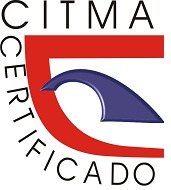Agglomerative Hierarchical Clustering method for allocating financing to local development projects
Keywords:
Financing; hierarchical clustering; local development; multi-criteria decision.Abstract
Since the beginning of the process of updating the Cuban economic model in 2011, initiatives have been promoted to improve the Cuban territorial management model, grant municipalities and their governments the necessary decentralization within the framework of a centrally planned economy and develop the instruments that make possible the integral application of the conception of Local Development.
In this sense, development strategies are focused on local projects allowing the achievement of food production that enables municipal self-sufficiency, favoring the development of mini-industries and service centers, where the principle of financial self-sustainability is a key element, harmonically compatible with the objectives of the plan of the National Economy and of the municipalities. Hence, the management of financing at the local level constitutes a fundamental element to be considered, not only because of its scarcity, but also because of the need for efficient and timely administration. This paper defines a methodology for the allocation of financing to local development projects based on multi-criteria decision techniques and the use of the Agglomerative Hierarchical Clustering method. This methodology was implemented in the creation of the Project Financing Allocation (ProFinAll) web application, a system that uses multi-criteria decision-making to select the best projects, based on qualitative criteria and decisions provided by experts, and which allows matching between projects and funding sources.
References
Torres, C. (2018). Modelo para la gestión de políticas territoriales de desarrollo local a escala municipal en Cuba. Revista Anales de la Academia de Ciencias de Cuba Vol. 8 No. 1, 2018.
Caño, M. d. (2004). Cuba, desarrollo local en los noventa. La Habana: en Desarrollo Humano Local, Cátedra UNESCO, Universidad de la Habana.
Partido Comunista de Cuba. (2011). Lineamientos de la política Económica y Social del Partido y la Revolución. La Habana: Oficina de Publicaciones del Consejo de Estado.
Finot, I. (2005). Descentralización, transferencias territoriales y desarrollo local. Revista de la CEPAL,86.
Capote, R., & Torres, C. (2018). La gestión del financiamiento en los procesos de desarrollo local. Revista Caribeña de Ciencias Sociales, abril. Disponible en: https://www.eumed.net/rev/caribe/2018/04/financiamiento-desarrollo-local.html
Ho, W., Ma, X. (2018). The state-of-the-art integrations and applications of the analytic hierarchy process, European Journal of Operational Research, Volume 267, Issue 2, 2018, Pages 399-414, ISSN 0377-2217, https://doi.org/10.1016/j.ejor.2017.09.007.
Dos Santos, P.E. et al (2019). The analytic hierarchy process supporting decision making for sustainable development: An overview of applications. Journal of Cleaner Production, Volume 212, 1 March 2019, Pages 119-138
Pascual González, D. (2010). Algoritmos de Agrupamiento basados en densidad y Validación de clusters (Tesis Doctoral). Departament de Llenguatges I Sistemas Informátics Universitat Jaume I. Castellón. Recuperado 16 de marzo de 2020, de http://www.cerpamid.co.cu/sitio/files/DamarisTesis.pdf
Amador, L., García, M. M., Gálvez Lío, D., & Magdaleno, D. (2017). SemClustDML: Algoritmo para agrupar artículos científicos basado en la información brindada por las referencias bibliográficas. Revista Cubana de Ciencias Informáticas, 11(2), 46-60.
Nantes, E. A. (2019). El método Analytic Hierarchy Process para la toma de decisiones. Repaso de la metodología y aplicaciones para profesionales. Bahía Blanca, Provincia de Buenos Aires, Argentina.
Lumbreras, M. I., (2020). Evaluación de análisis de clustering jerárquico en datos moleculares de alta dimensión. Tesis de Máster en Bioinformática y Bioestadística, Universidad Oberta de Catalunya, España.
Darko, A., et al (2019). Review of application of analytic hierarchy process (AHP) in construction, International Journal of Construction Management, 19:5, 436-452, DOI: 10.1080/15623599.2018.1452098
Hamed, T. (2017). Decision Making Using the Analytic Hierarchy Process (AHP); A Step by Step Approach (2017). International Journal of Economics and Management Systems, Vol. 2, 2017, Available at SSRN: https://ssrn.com/abstract=3224206
Downloads
Published
How to Cite
Issue
Section
License
Copyright (c) 2021 Daniel Valdés García, Raymari raymari.rch@gmail.com, Ramón Alexander Jaime Infante, Elena Figueroa Cabrera, José Alejandro Suárez Hernández

This work is licensed under a Creative Commons Attribution-NonCommercial 4.0 International License.













